“It is not about the destination. It is about the journey.” At some point in our life, we all have come across this expression. A road trip across Kinnaur and Spiti can make you realize the actual essence of that saying. Literally. Do not believe us? Let us take you on a photo journey of the scenes we had witnessed during one of our best and most memorable road trips in India. Also, at the end, we will provide you with a day-wise road trip itinerary, just so you can create a similar experience of your own.
The road trip – A photo journey
Before retiring for the day, the sun peeped through the clouds and washed the mountain valley in soft rays. We had crossed Narkanda. Our journey had begun.
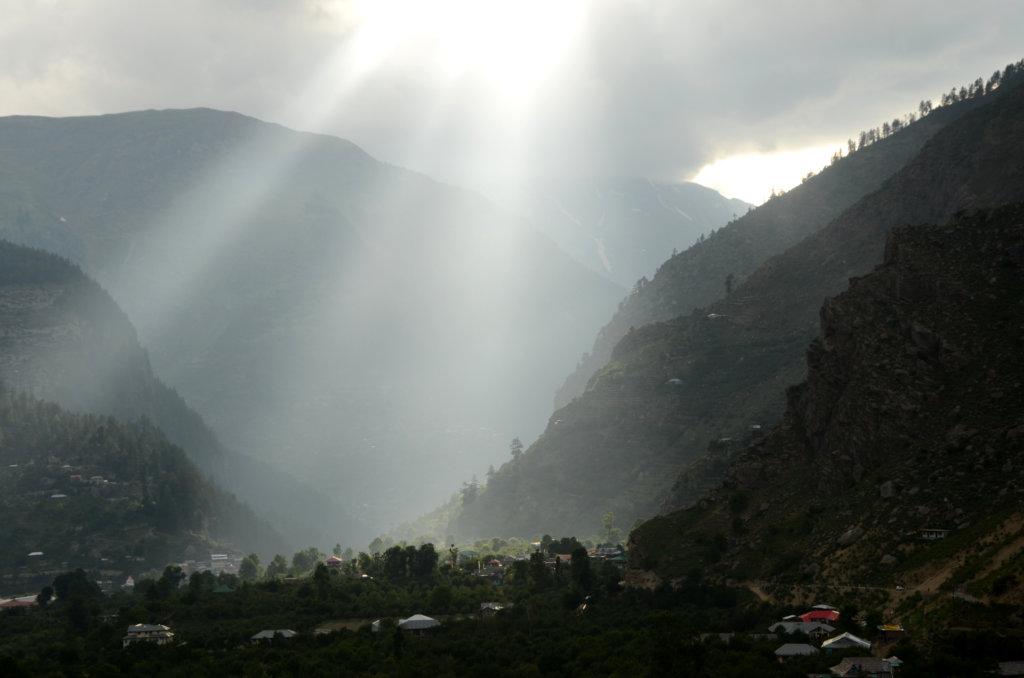
The night at Rakcham was nothing less than a dream. We sat in our hotel balcony, listened to the burbling of the flowing river and watched a sky full of million stars.
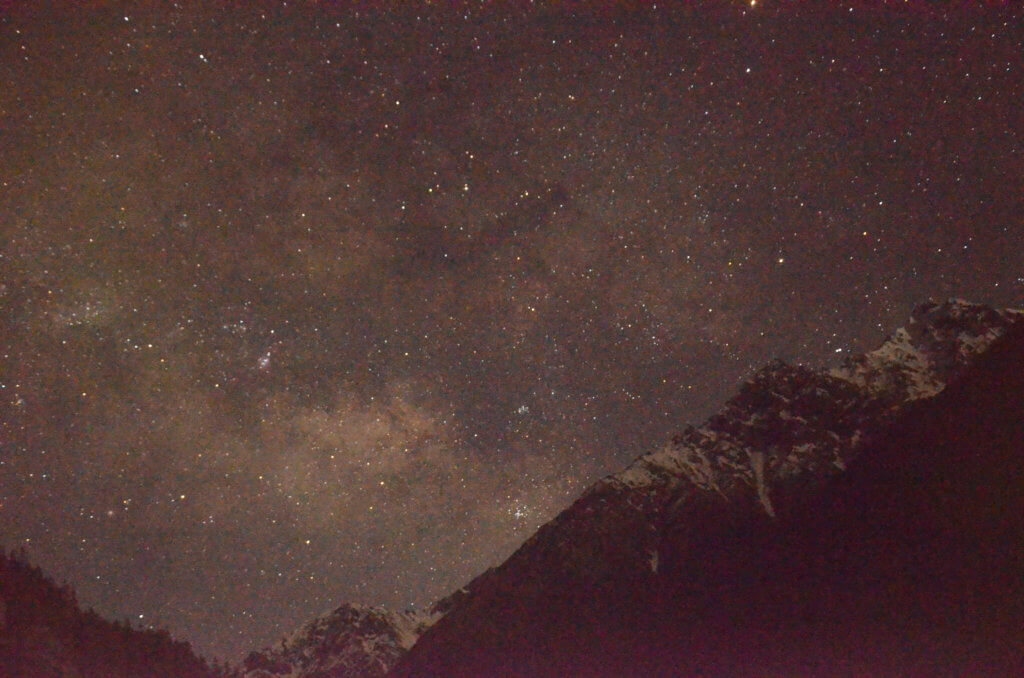
Chitkul village is the among the prettiest villages we have ever been to in India. Do you know what lies beyond these snow-capped mountains? Tibet! That makes Chitkul the last Indian village on this section of the border.
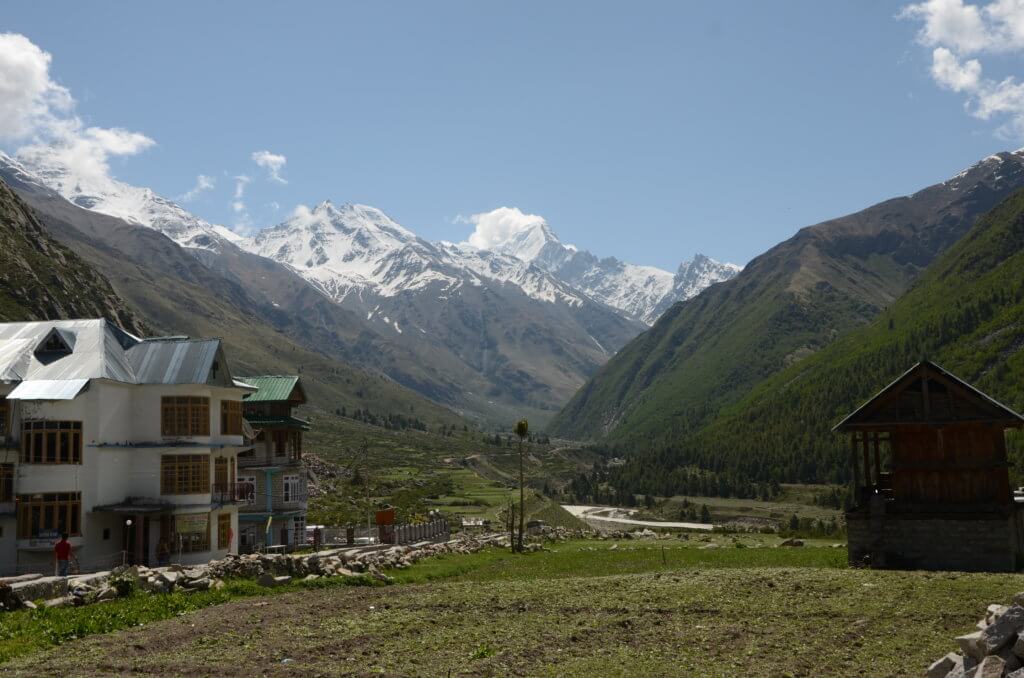
The roads are often narrow unpaved paths coiling up the mighty mountains, with rocky stone pelting mountain wall on one side and deep valleys on the other.
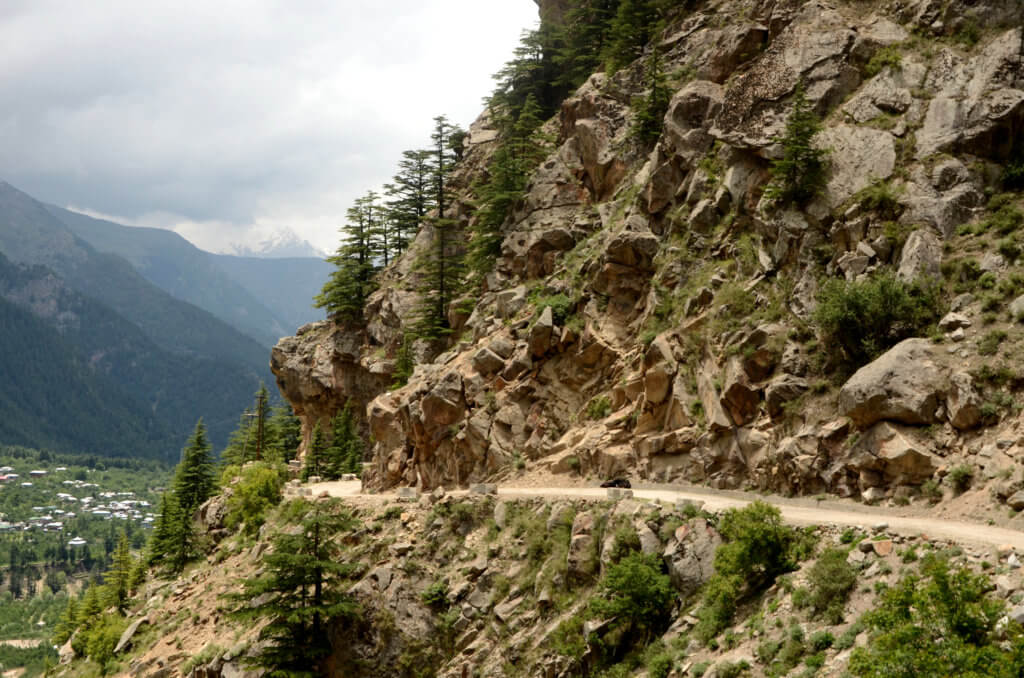
A small fort with wooden carvings and wooden balconies with the backdrop of snow-capped Himalayas, and the lookout of the Sangla Valley. The setting of Kamru Fort is absolutely picturesque!
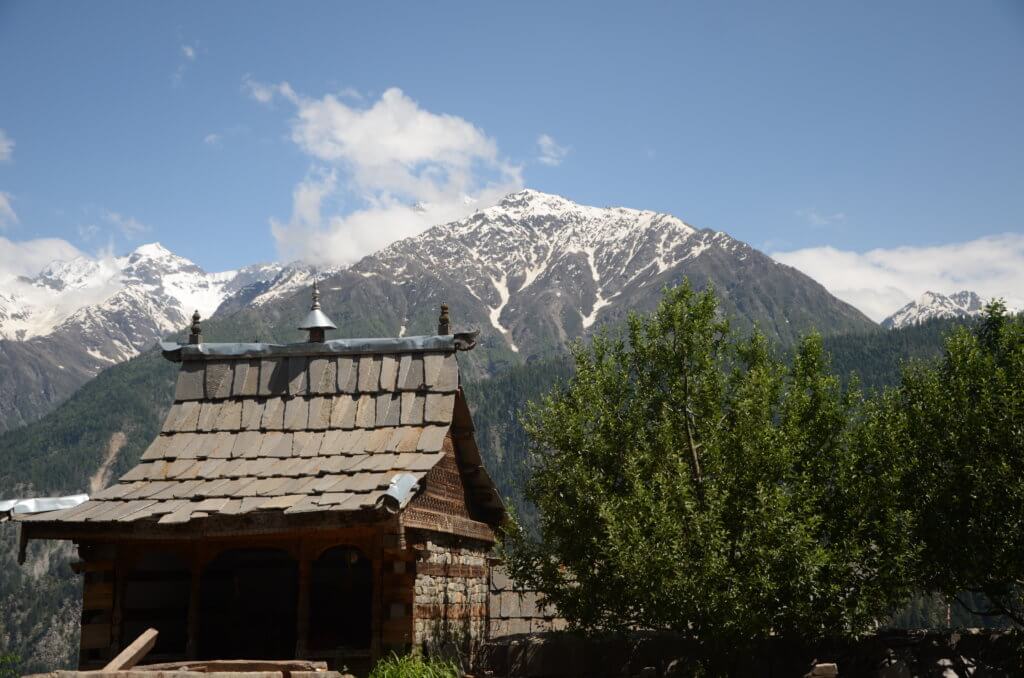
Chini is a small village in the Kinnaur district with lovely locals and stunning views of the mountain range.
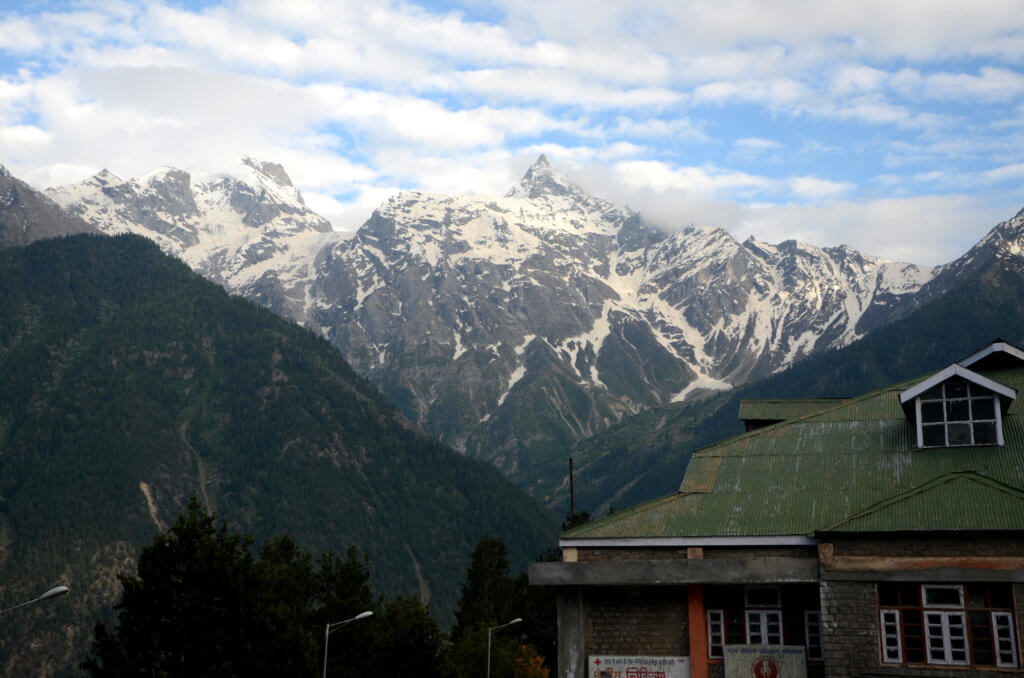
We watched the the bright white of the snow gradually turn soft gold as the sun was setting behind the village.
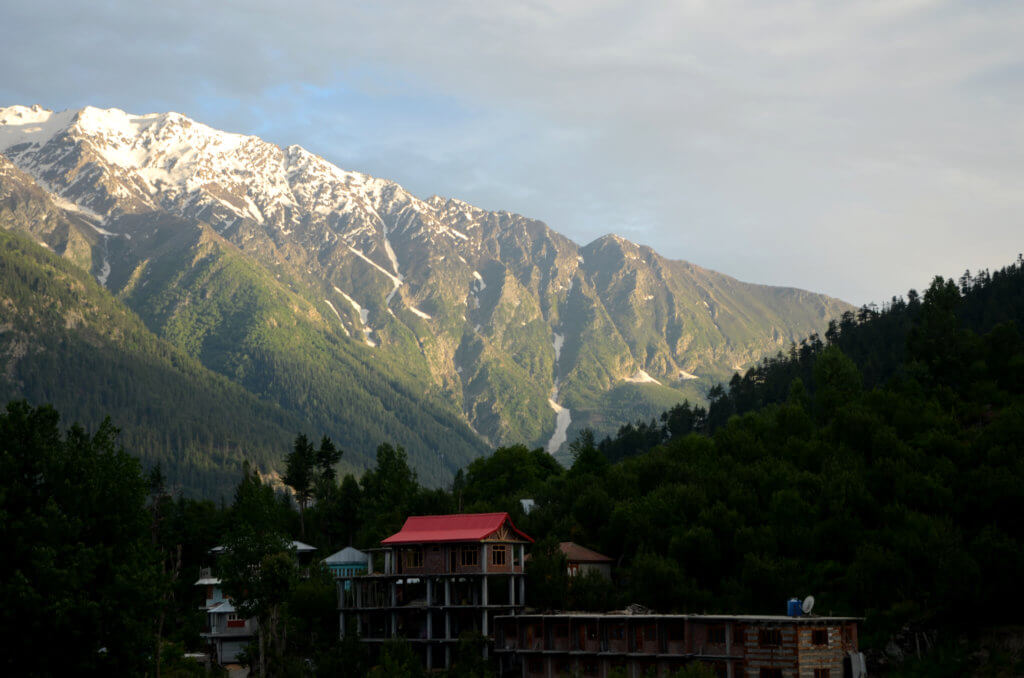
Mornings in Kalpa offered glorious views of the Kinnaur Kailash range.
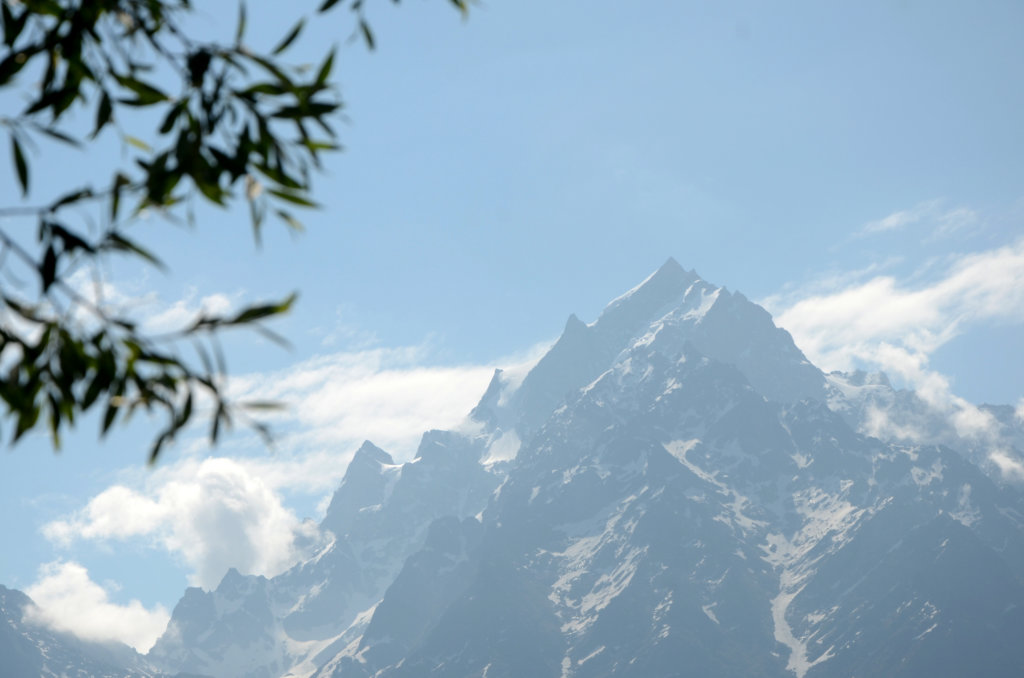
The visuals along the journey often changed colors. Gradually, we were leaving the greens of Kinnaur and moving towards the browns of Spiti.
Sometimes, we saw mountains covered in green vegetation.
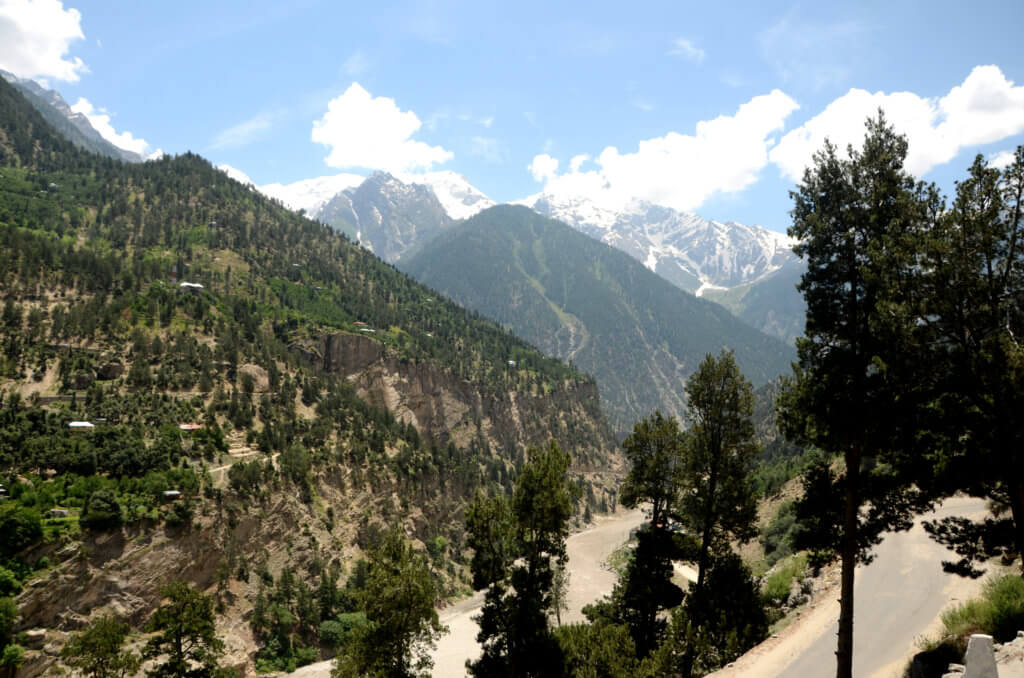
Sometimes, we moved through winding roads amidst brown barren mountains.
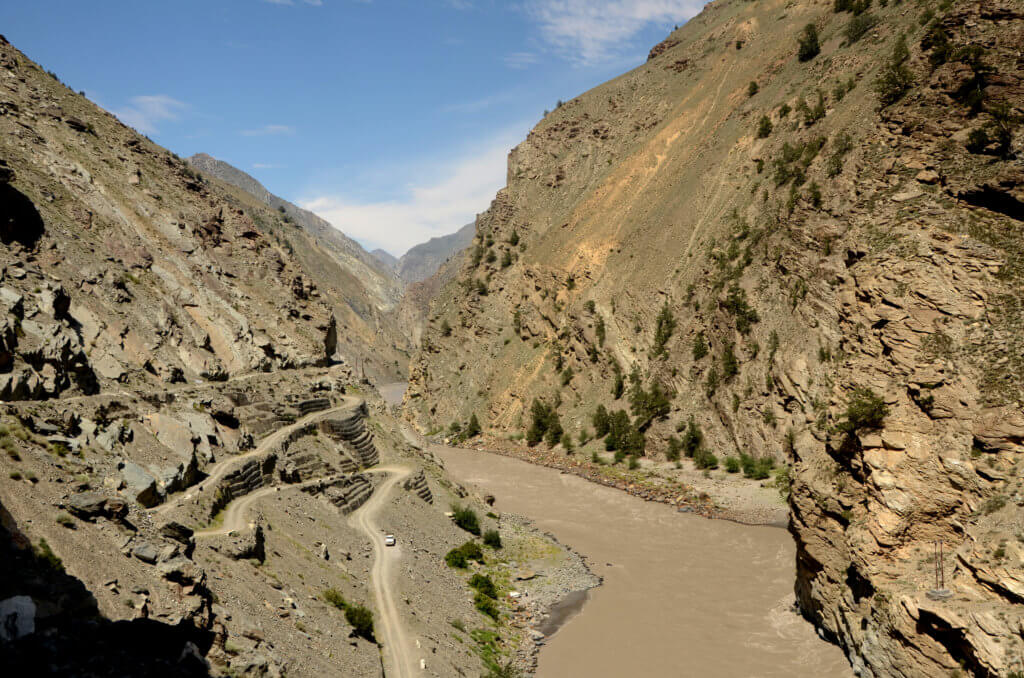
Often snow white peaks peeped from behind the brown mountains.
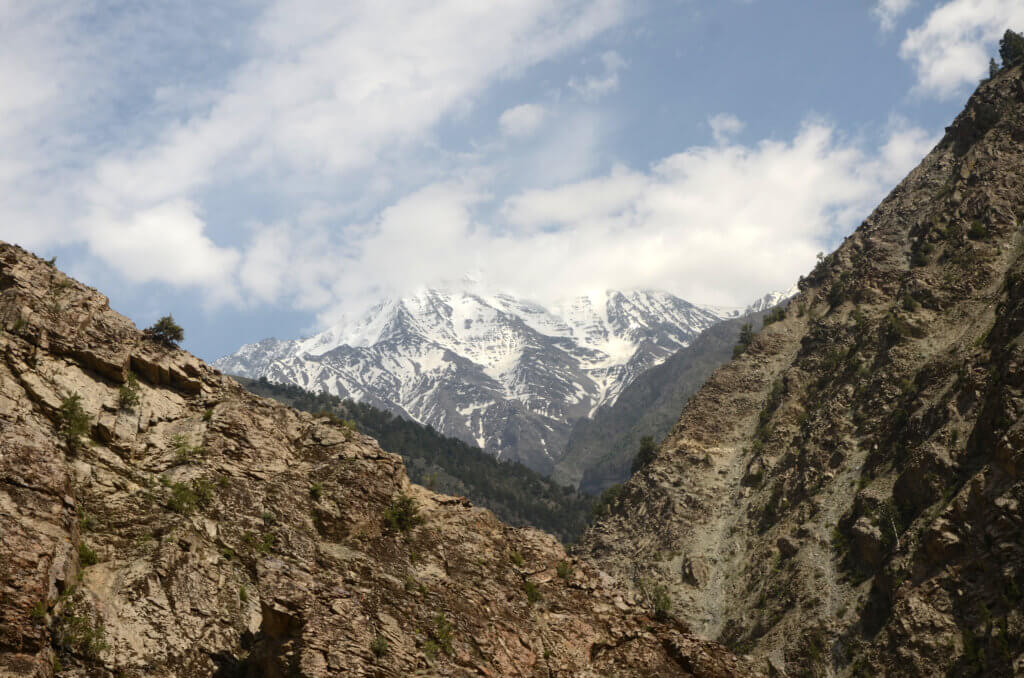
At the confluence of the rivers Spiti and Sutlej, geology had left astonishing marks on the mountain walls.
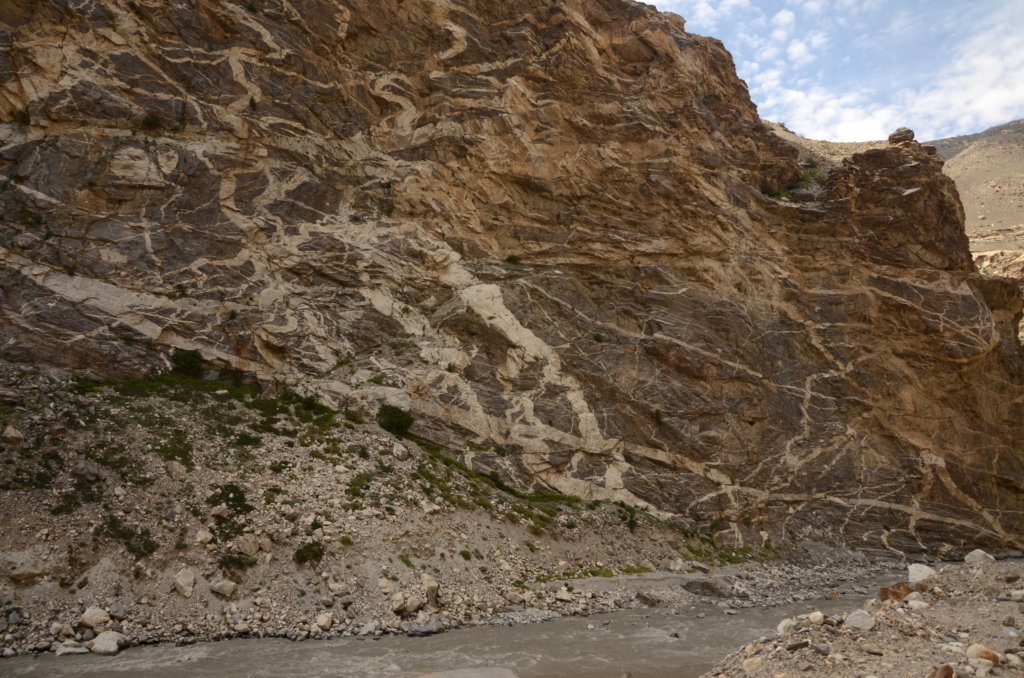
Do you see the road passing from under the umbrella of the protruding rocky mountain walls? The Hindustan Tibet road, considered to be one of the most dangerous roads in the world, is considered an engineering marvel because of this half-tunneling technique applied at many sections of the road.
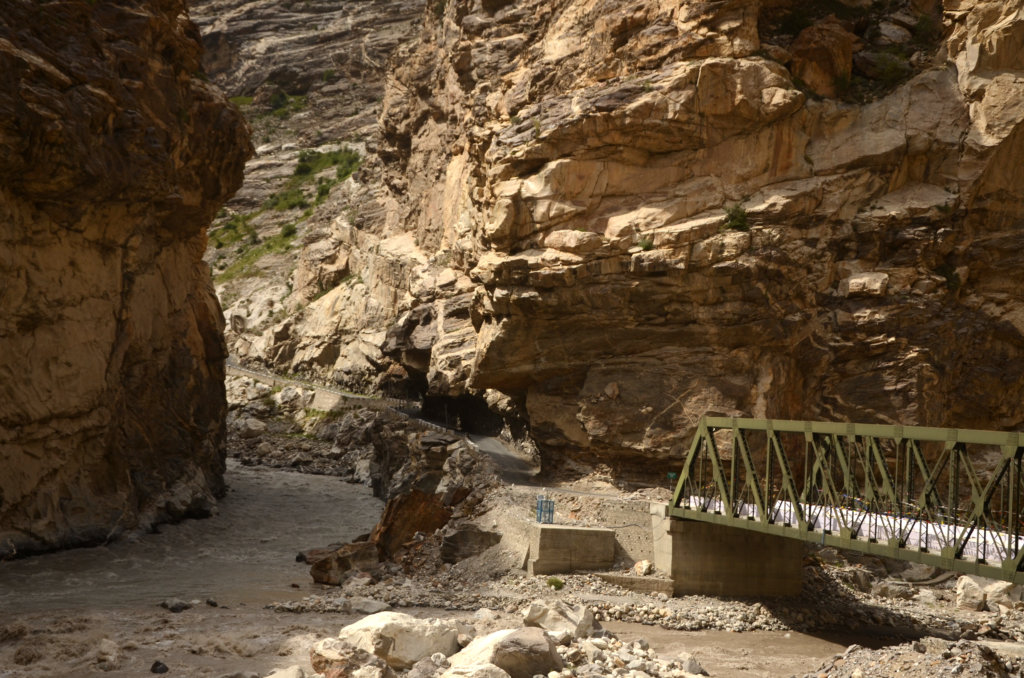
The verdant sight of terrace farming slopes of Nako village was a delight to behold.
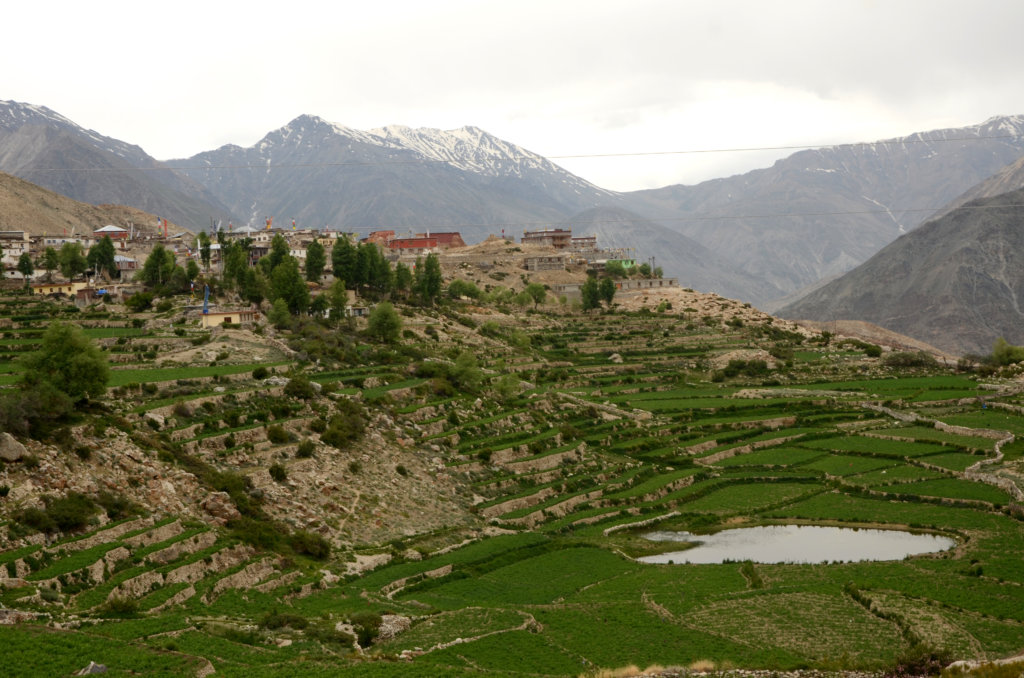
We spent some quiet moments in the evening by the quaint Nako lake.
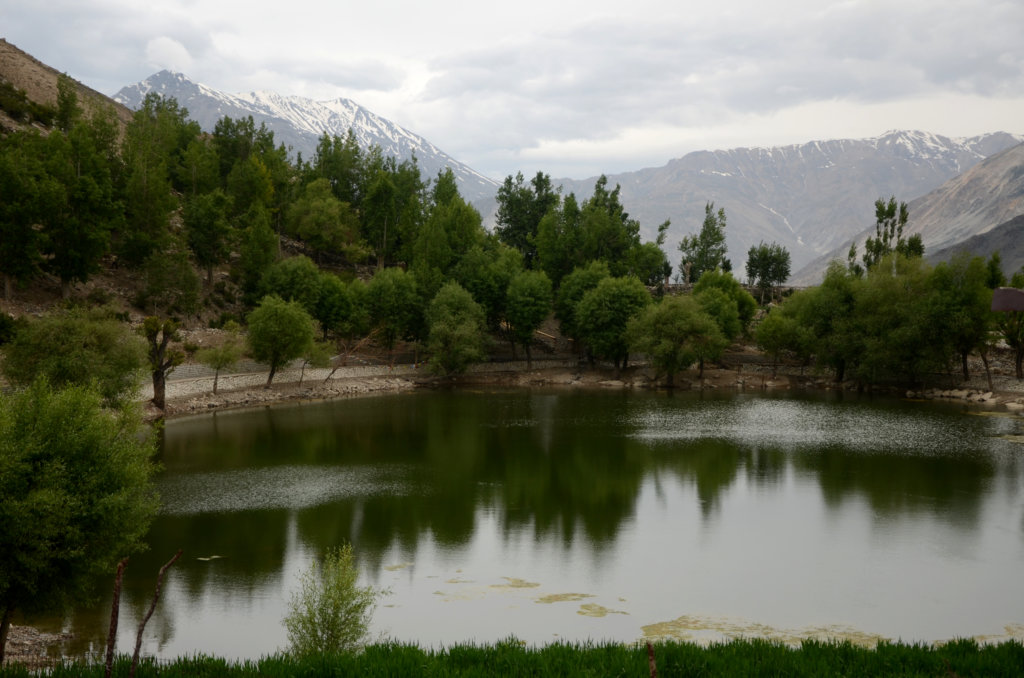
When the villagers of Tabo had fallen asleep at night, we took a walk along the village paths. Our paths were illuminated by nothing but moonlight. The feel of the night was unreal!
The next morning we visited the Tabo monastery.
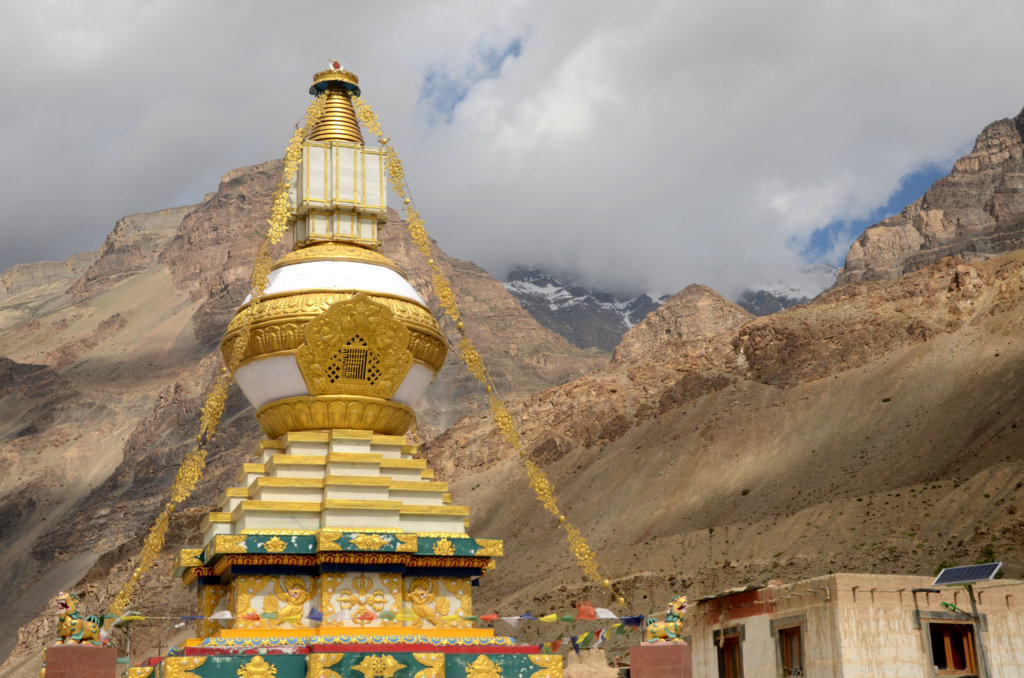
The journeys may be long and rough. The body may be tired. But, with continuously changing splendid scenery, the soul is always fresh.
This was a random view from the car window on the way to Dhankar.
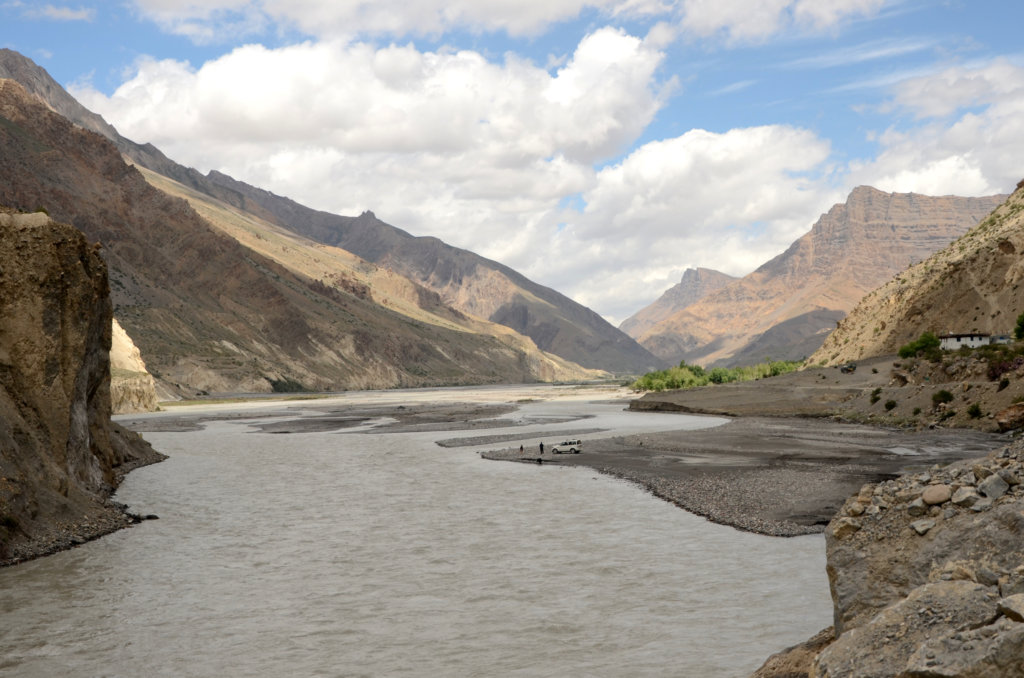
Dhankar monastery is a 16th century monastery on a clifftop in Dhankar village. The outside view of the monastery is as gorgeous as amiable its inside is.
South of Dhankar monastery, lies the Pin Parvati Valley. To make more of your Himachal trip, you can also add to your itinerary a backpacking trip of Parvati Valley.
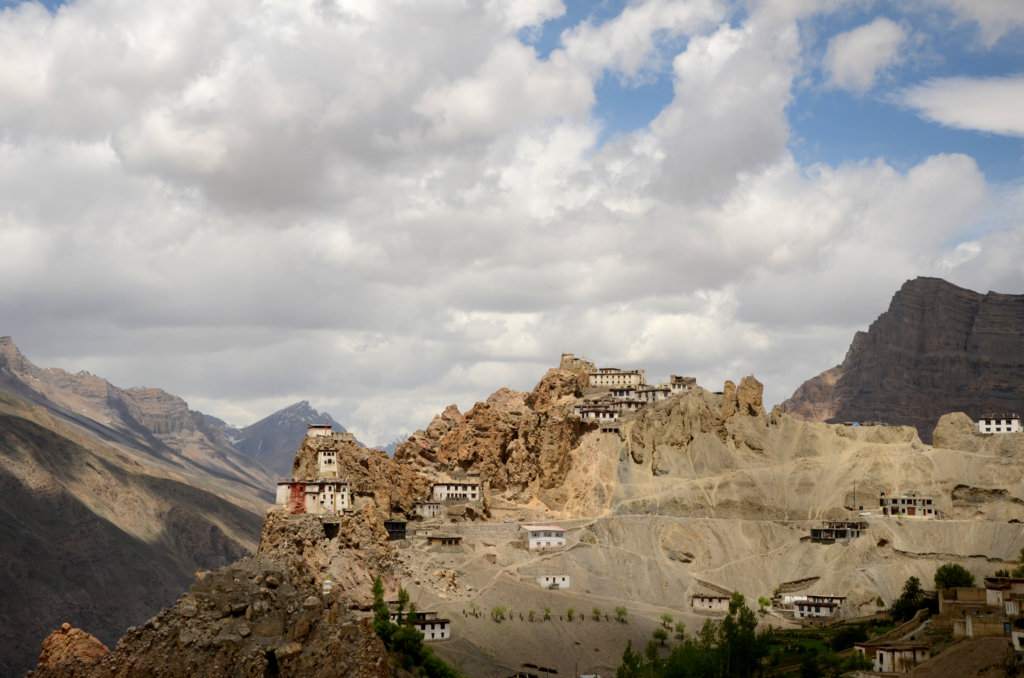
But, before we visited the Dhankar monastery, we chose to pump some oxygen into our lungs. From Dhankar village, we trekked up along the edges of the mountain to reach the Dhankar lake at the top. [Cars cannot reach here.]
Dhankar lake may not have waters as blue as Pangong Tso or Tso Moriri. But, since there was absolutely nobody around, except our group of six people, the setting was serene.
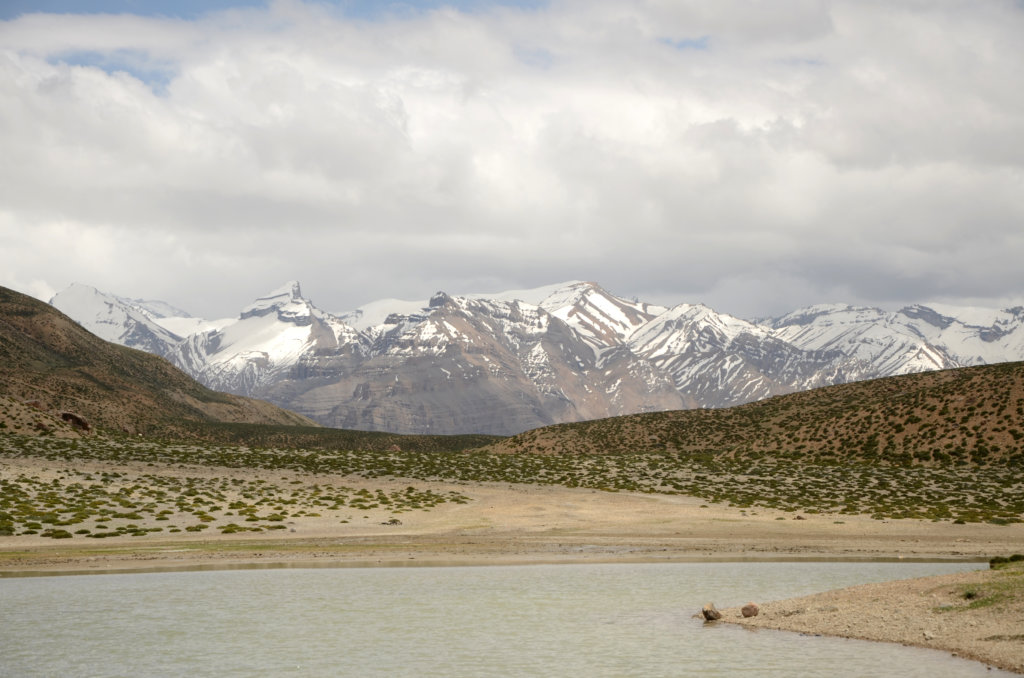
Then we walked down the same path to reach the Dhankar monastery, where we had a hearty lunch.
Can you see how tiny the clifftop monastery looks from here? It is down the path and on the right. Spotted now?
Also, along our trek route, we got some gorgeous views of the confluence of the rivers Spiti and Pin.
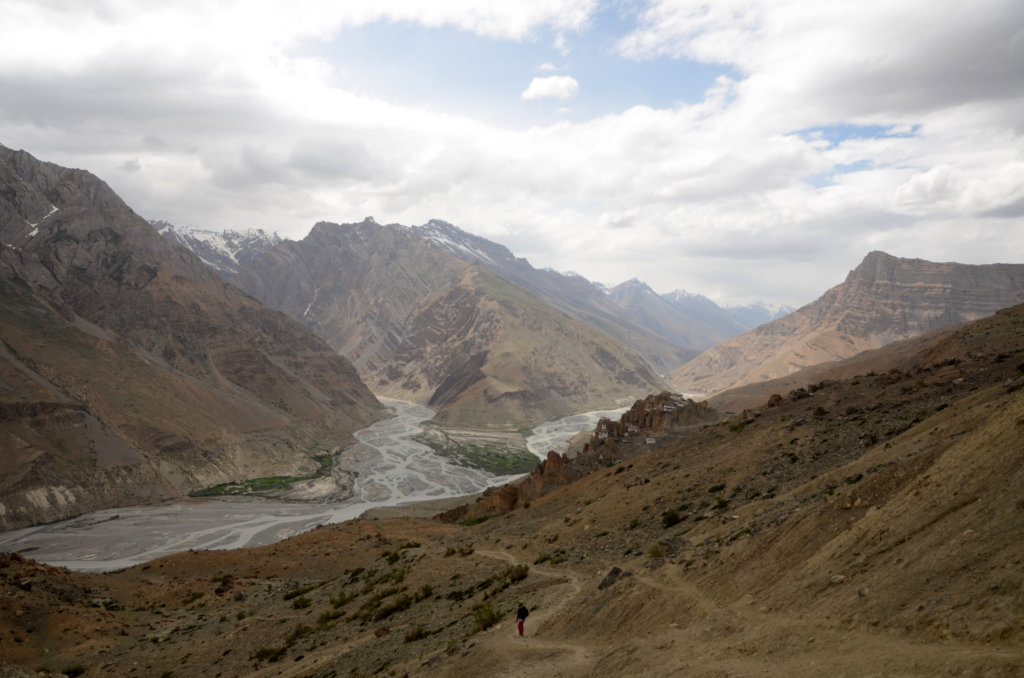
The biggest monastery in Spiti is the Key monastery. The morning we visited this, the mountains were covered in cloud and the temperatures were almost freezing. In fact, our hotel did not have steady water supply in the early morning because supposedly the source water had frozen because of the temperatures in the higher altitudes.
As we entered the monastery, the monks offered us some kind of infused tea that bestowed an immediate comfort to our otherwise shivering bodies.
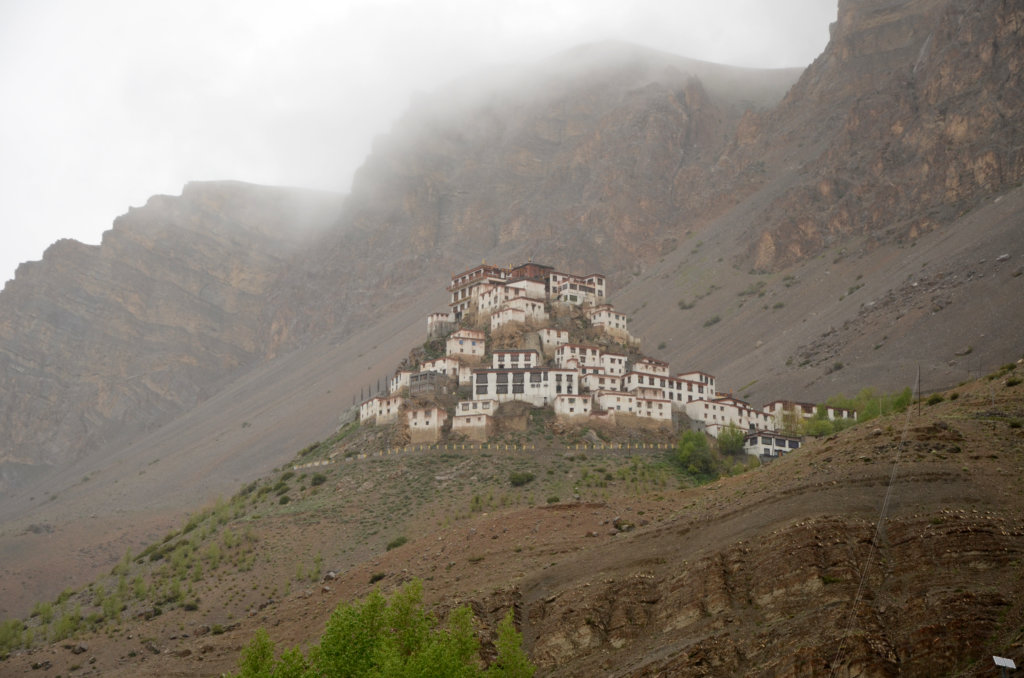
Although Kaza is the sub-divisional headquarter of Spiti valley, there are multiple small villages scattered around. Langza is one such. A handful of houses in the lap of snow-capped Himalayas constitute the Langza village.
Despite the growing tourism, Spiti still counts as one of the less explored destinations in India.
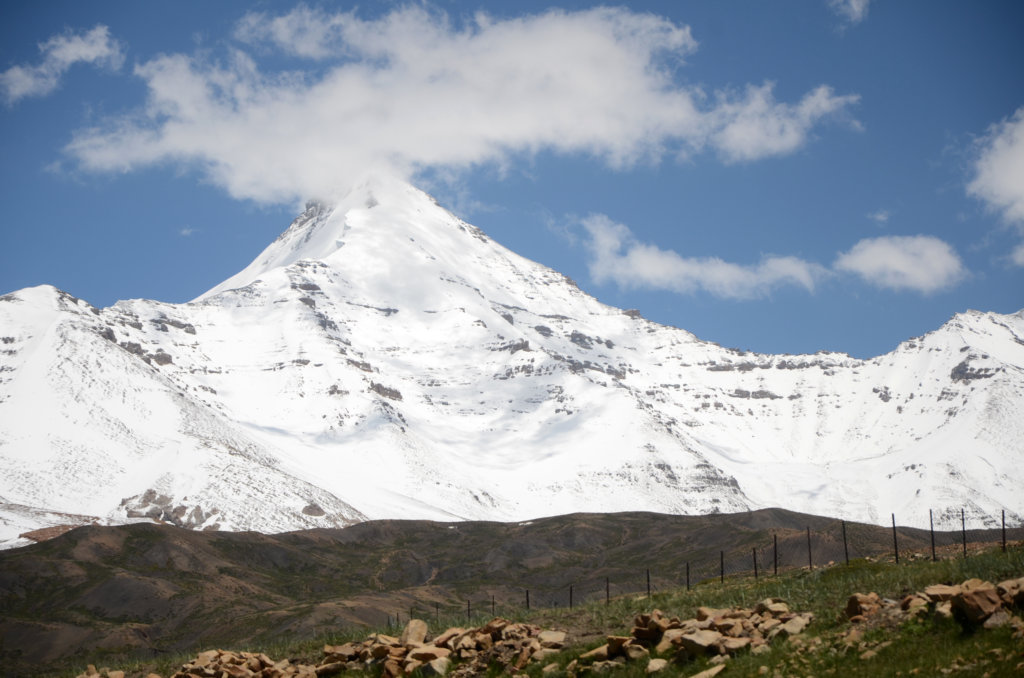
One of the notable attractions in Langza is the large statue of Lord Buddha overlooking the valley.
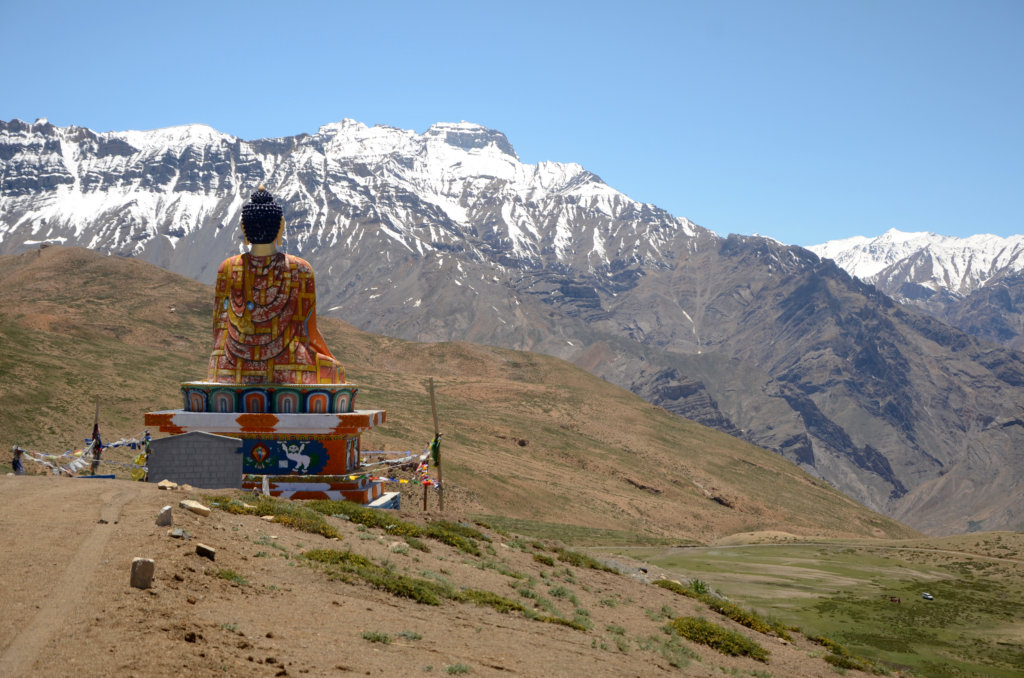
Many of the villages had display boards with the village name and the village population inscribed on them. To me, this was the most amusing part of the whole trip. The population counts often read in two or three digits.
This was the board for Komik village, with the population count of 114.
No, it is not the numbers like 114 or 137 that amused me. Instead, I kept wondering where are these 100 people?! We could hardly spot any humans around. Did they count the cattle as well?
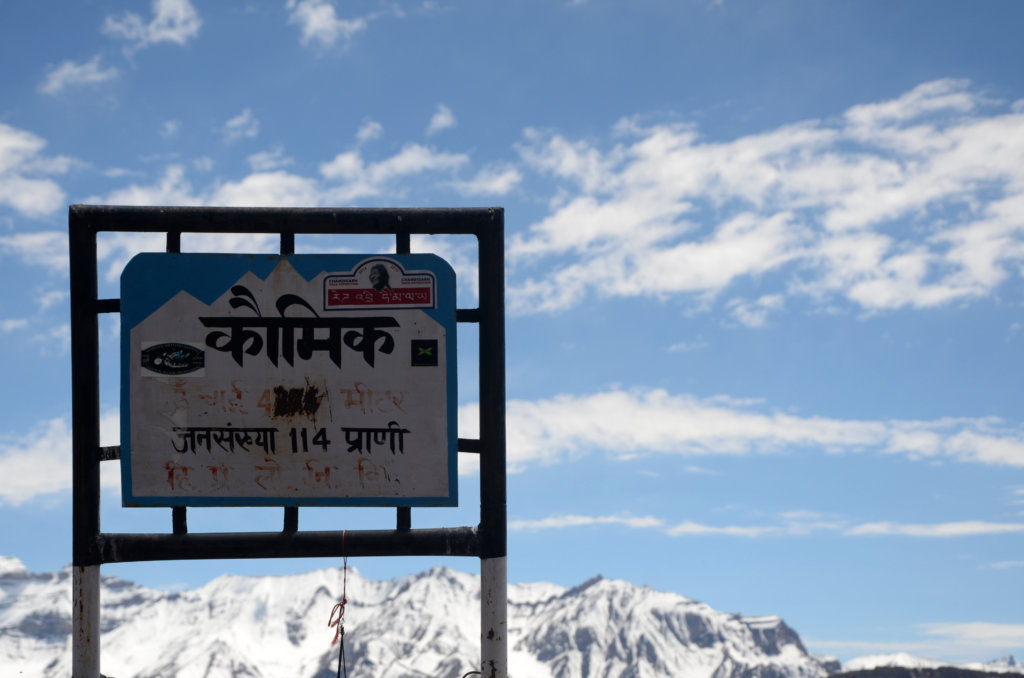
Take a look at the Komik village. Where are the 114 people?
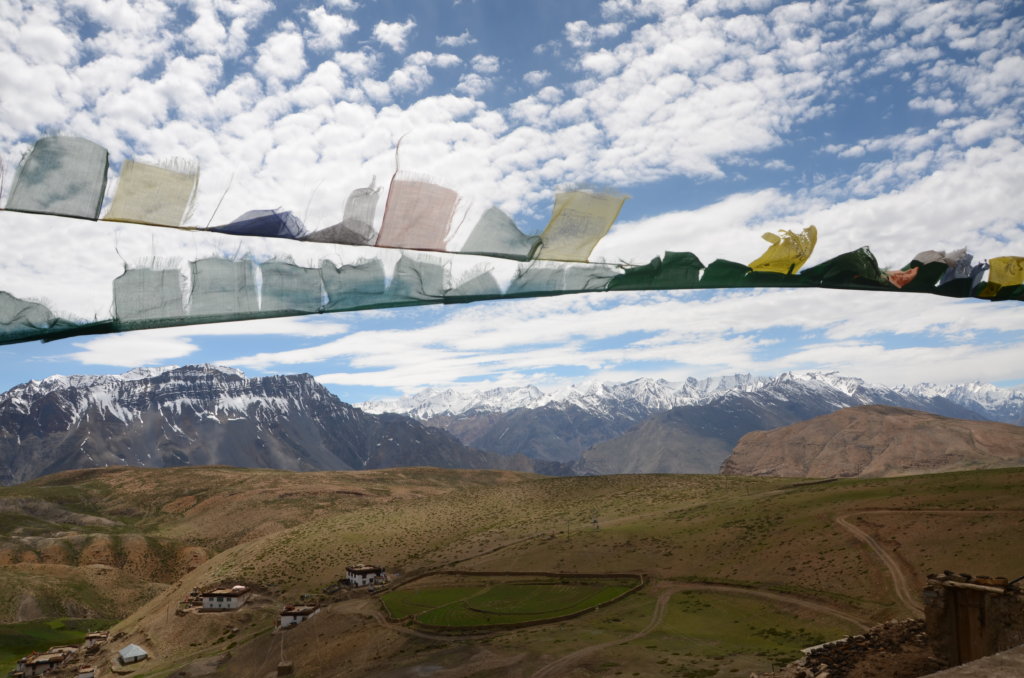
Coming back to the road trip, can you trace the road we traversed on the way back to Kaza village?
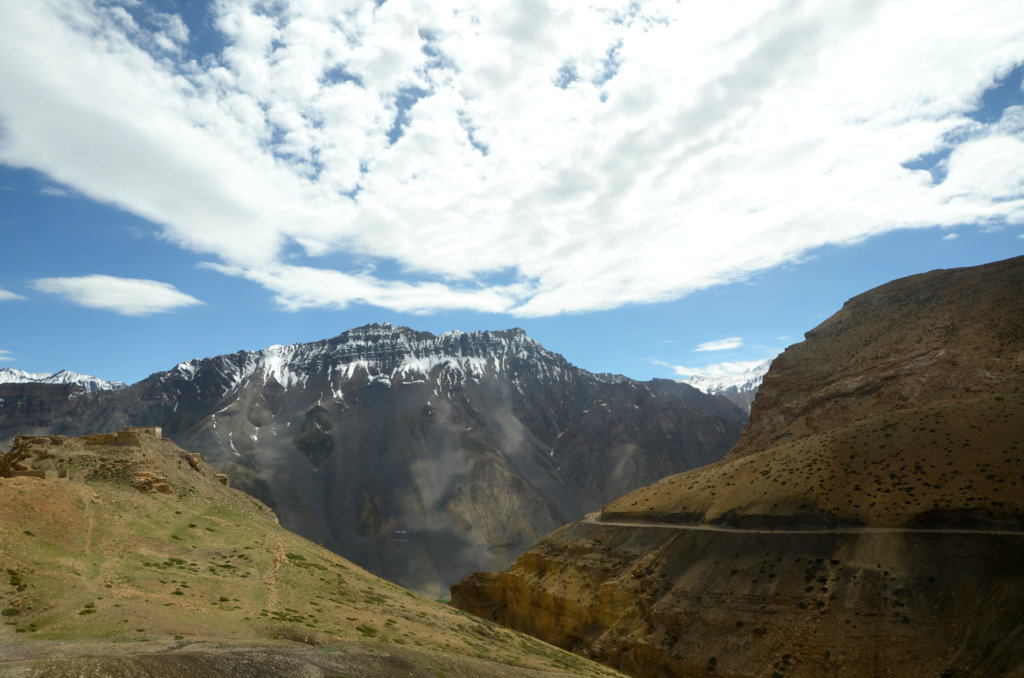
And road trips can add cool perspectives to what you see otherwise. This is how Kaza looked from a road from above.
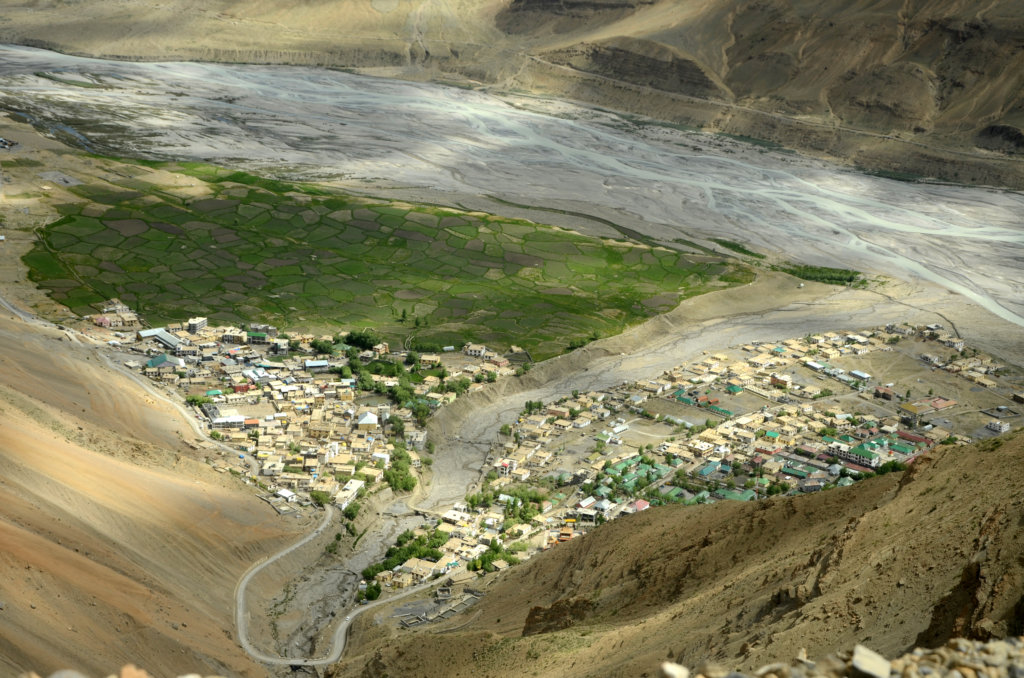
We had earlier traveled on the Manali-Leh highway. But when our journey began on the Kaza-Manali road, we realized that we were in for a whole different ride!
For starters, snow melted water from the glaciers gushed from the mountain tops, and rippled across our rock-laden roadway only to slide down the deep gorges on the other side.
Throughout the journey, our driver kept saying prayers. Such a confidence booster for us, the passengers of the car! 😉
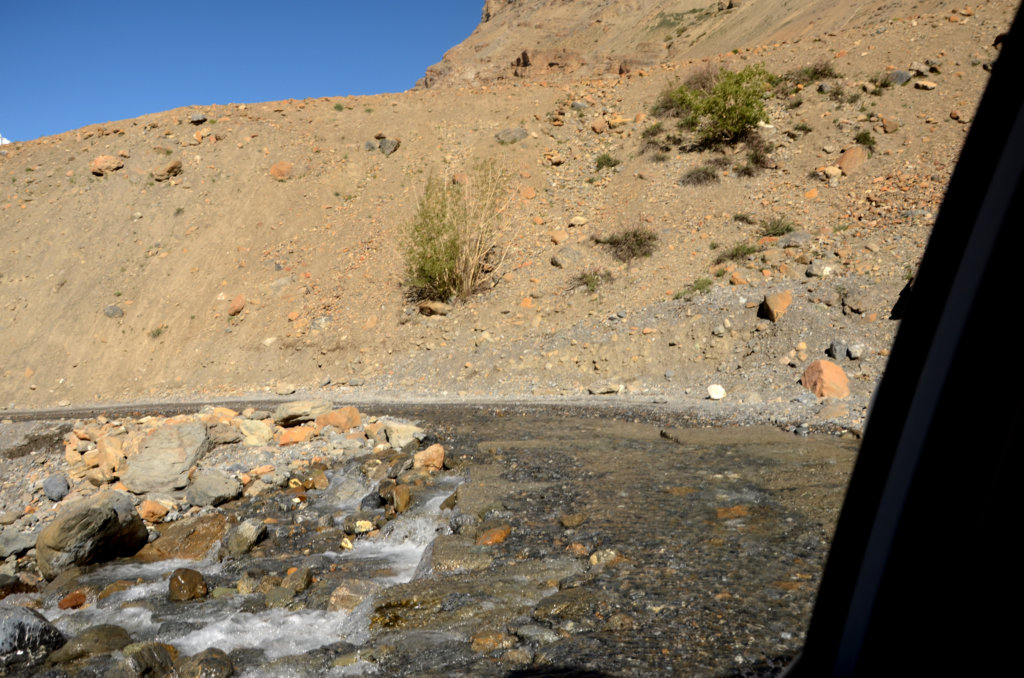
The Kaza-Manali route passes through Kunzum Pass. At 15,059 feet, this high altitude pass connects the Spiti valley with the Kullu valley and the Lahaul valley.
Kunzum Pass remains open only from June to September, when the snow is cleared off the roads. Depending on the snowfall of the season, the exact date of closing/opening varies every year.
The journey on Kaza-Manali road is bone rattling. But would you complain if you came across views such as this at the Kunzum Pass?
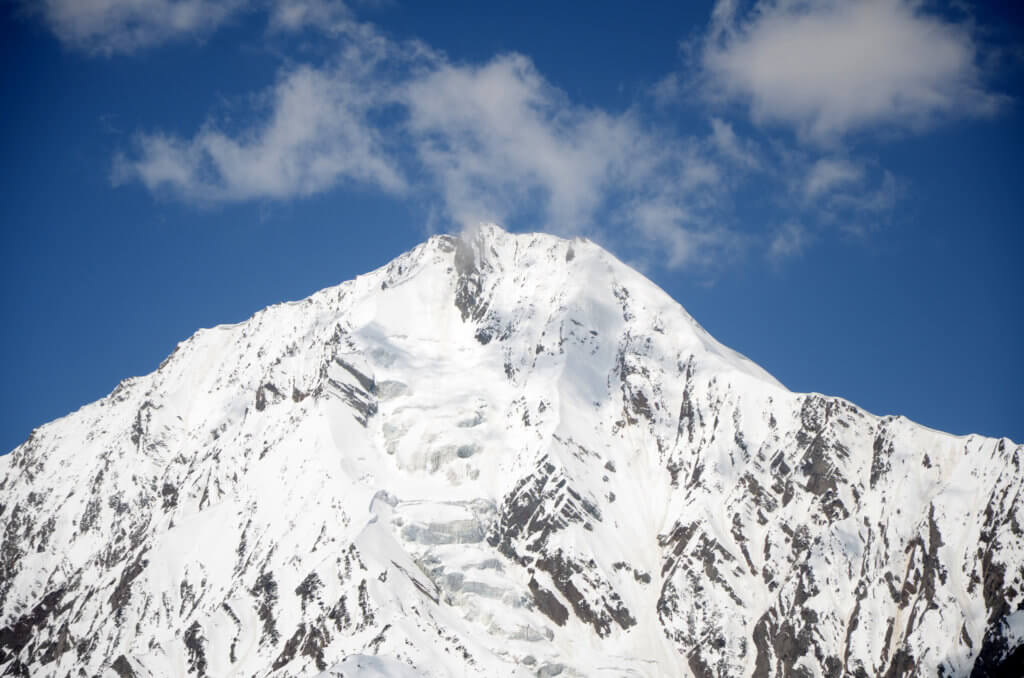
After a while, the road became more bearable for our bodies.
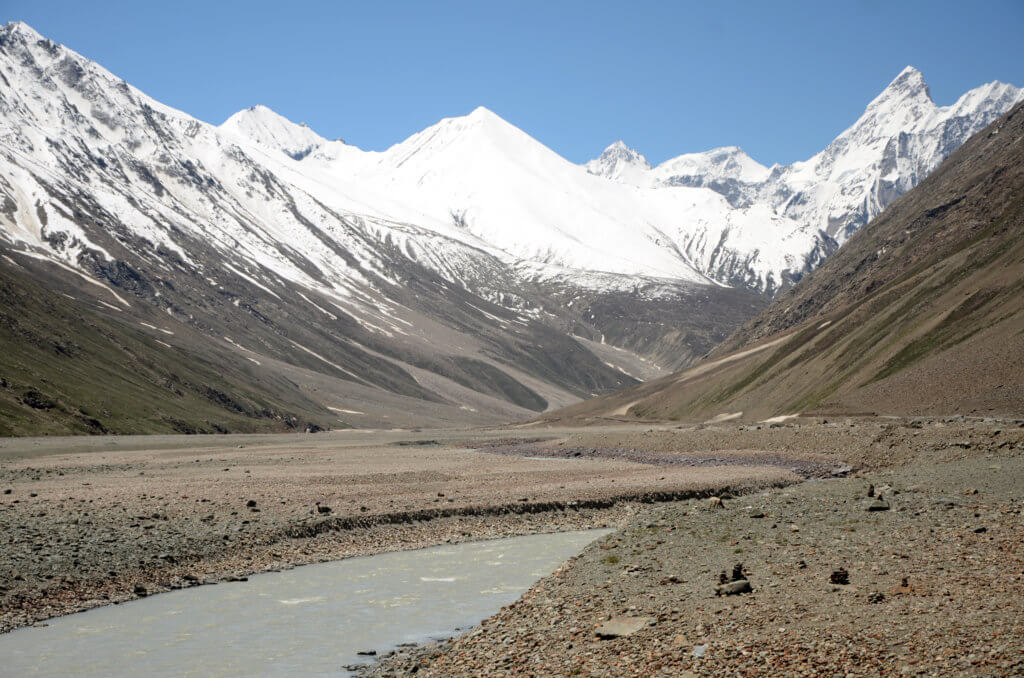
Or so we thought!
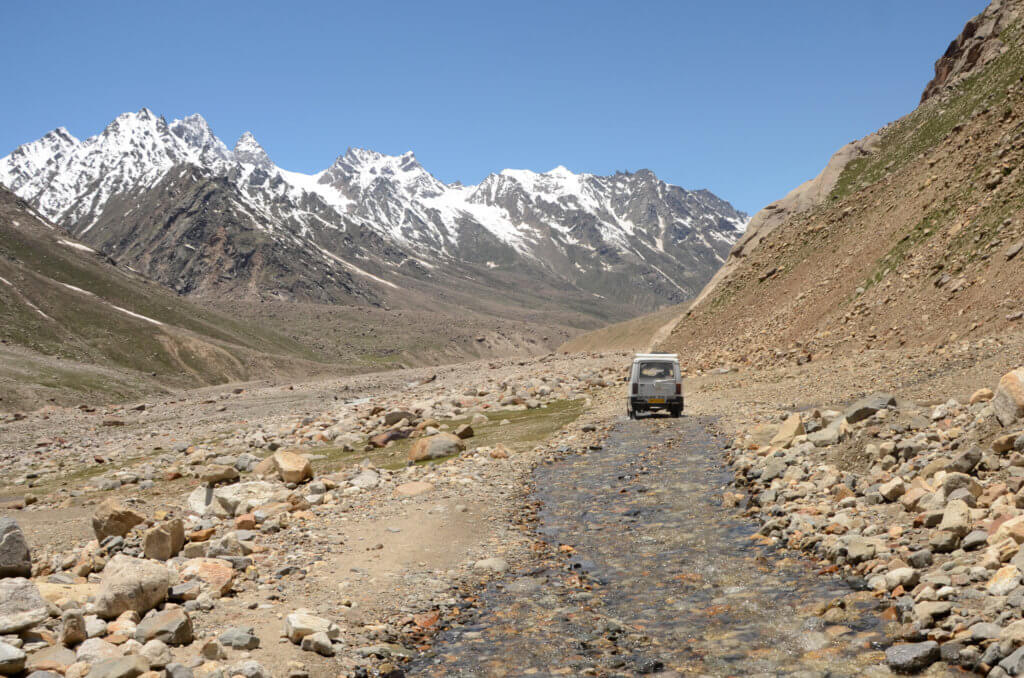
However, at least the mountain goats were having a good time grazing under the sun. Well, I suppose.
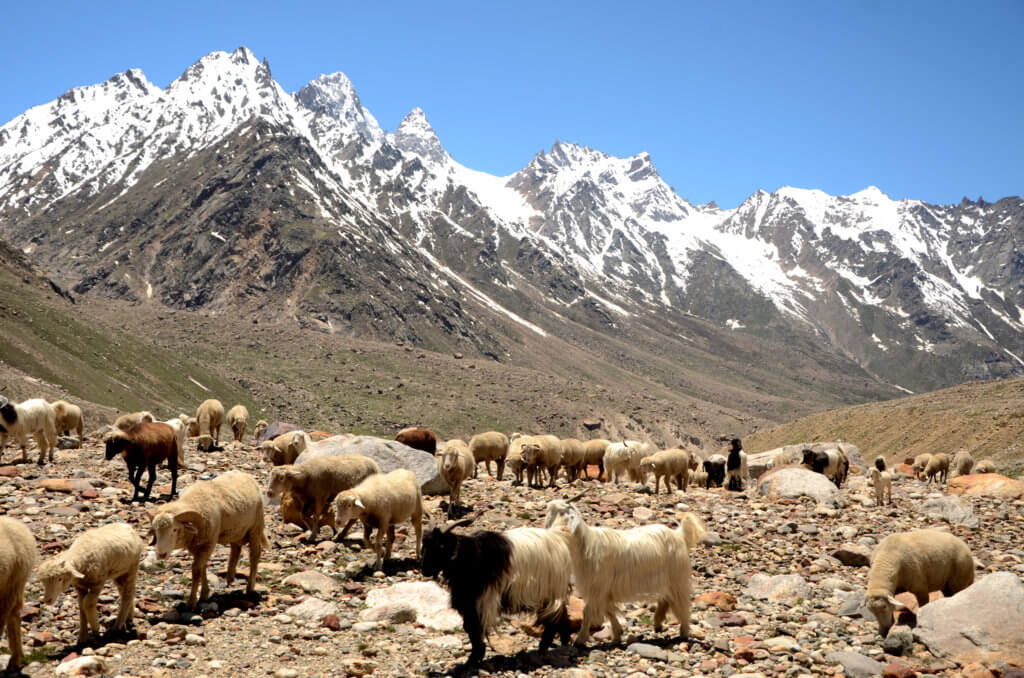
Oh, the sights you come across on road trips! A waterfall plunging down the rocky mountain walls.
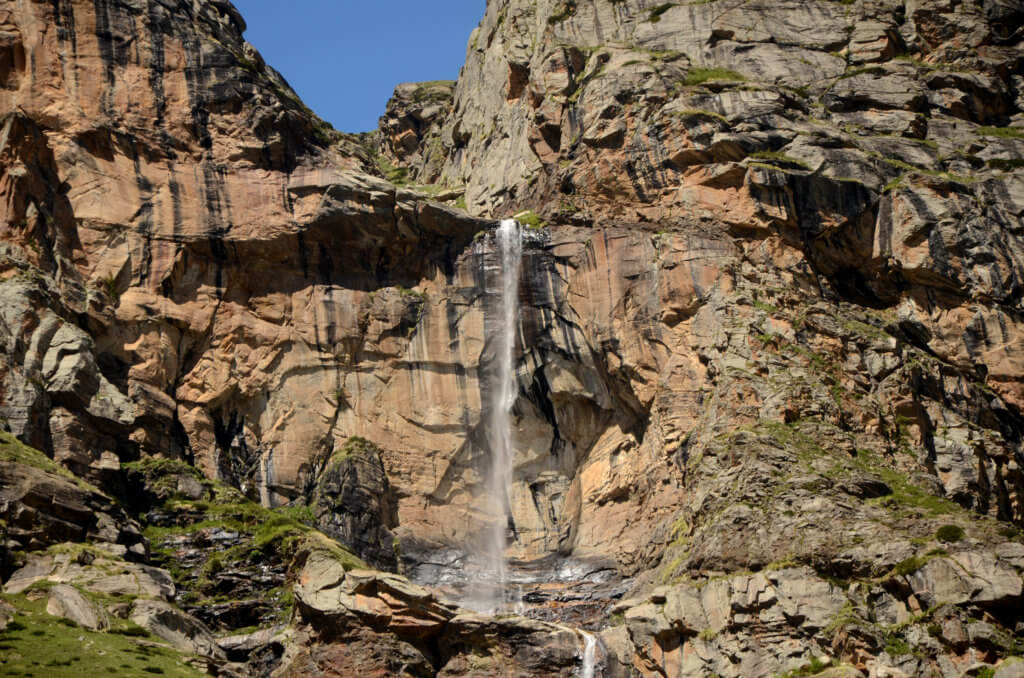
So, after a day long journey on treacherous roads, as we reached the Rohtang Pass (a comparatively easier drive), our driver exclaimed ‘naiyya paar laga di!’, meaning ‘Finally the boat has reached the shore!’.
Thus, to celebrate our driver’s achievement, we got down from the car and relaxed our muscles by walking a bit at the Rohtang Pass. The road was covered with thick sheets of ice on either side.
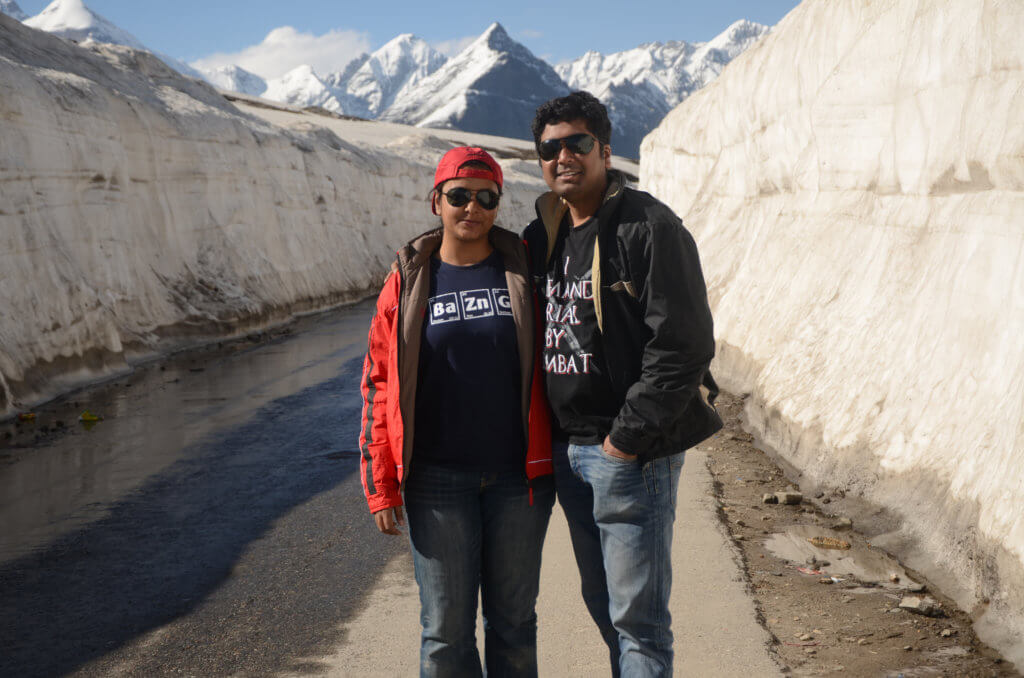
And then, soon after, we were back to the normal civilization – the kind of normal we are used to. We had entered Manali.
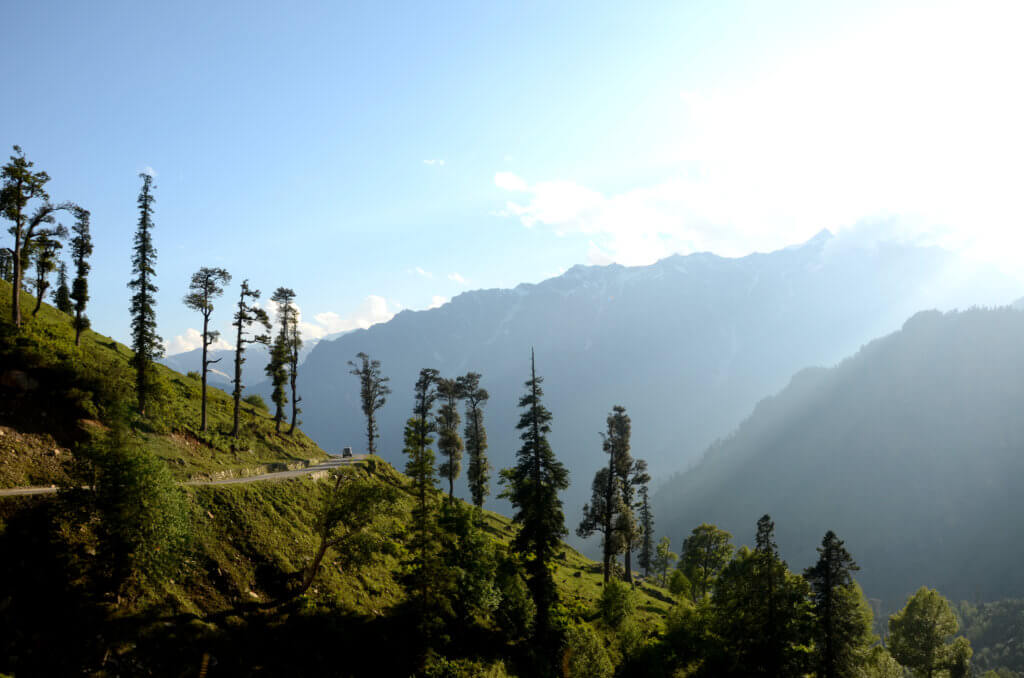
Road trip itinerary – 11 days
Day 01: New Delhi > Kalka > Simla > Narkanda
Day 02: Narkanda > Sangla > Rakcham
Day 03: Rakcham > Chitkul > Rakcham
Day 04: Rakcham > Kamru > Rekong Peo > Chini > Kalpa
Day 05: Kalpa > Nako > Tabo
Day 06: Tabo > Dhankar > Kaza
Day 07: Kaza > Key > Kiber > Kaza
Day 08: Kaza > Langza > Komik > Kaza
Day 09: Kaza > Losar > Chandratal
Day 10: Chandratal > Manali
Day 11: Manali > New Delhi
Best time to visit
If you want to do the full circuit, starting from Simla side and finishing at Manali, or vice-versa, you will need to choose months between June to September. For the rest of the months, Kaza cannot be reached from Manali side as the Kunzum Pass remains closed. Also, if you do not want to play too marginal (like us), it is better to plan for after June.
If you are fine re-tracing the route of your onward journey from Simla, you can plan during any time of the year. Of course, the winter months will be severely cold. But also, you will get to see thick sheets of snow blankets covering these beautiful little towns. September is a good choice if you want to witness the fall colors of yellow and orange.
When in the Himalayas, reserve buffer days
When you are traveling in the Himalayas, everything may not go as per your immaculately planned itinerary. Like, in our case, we had to skip Chandratal Lake because the road conditions were not favorable.
Also, it may happen that you like some place so much that you feel like spending more days than originally scheduled for. You may come across recommendations from locals on some nearby village which you earlier did not know about. You will need extra days in that case as well.
In all such scenarios, it helps if you have reserved a couple of buffer days while planning your Kinnaur and Spiti road trip itinerary.
Responsible tourism
Every year, the Himalayas have been seeing a surge in the tourist influx. This increases the amount of strain tourists leave behind in such places causing environmental degradation. So, if you plan to go on the Kinnaur and Spiti road trip, please do you part.

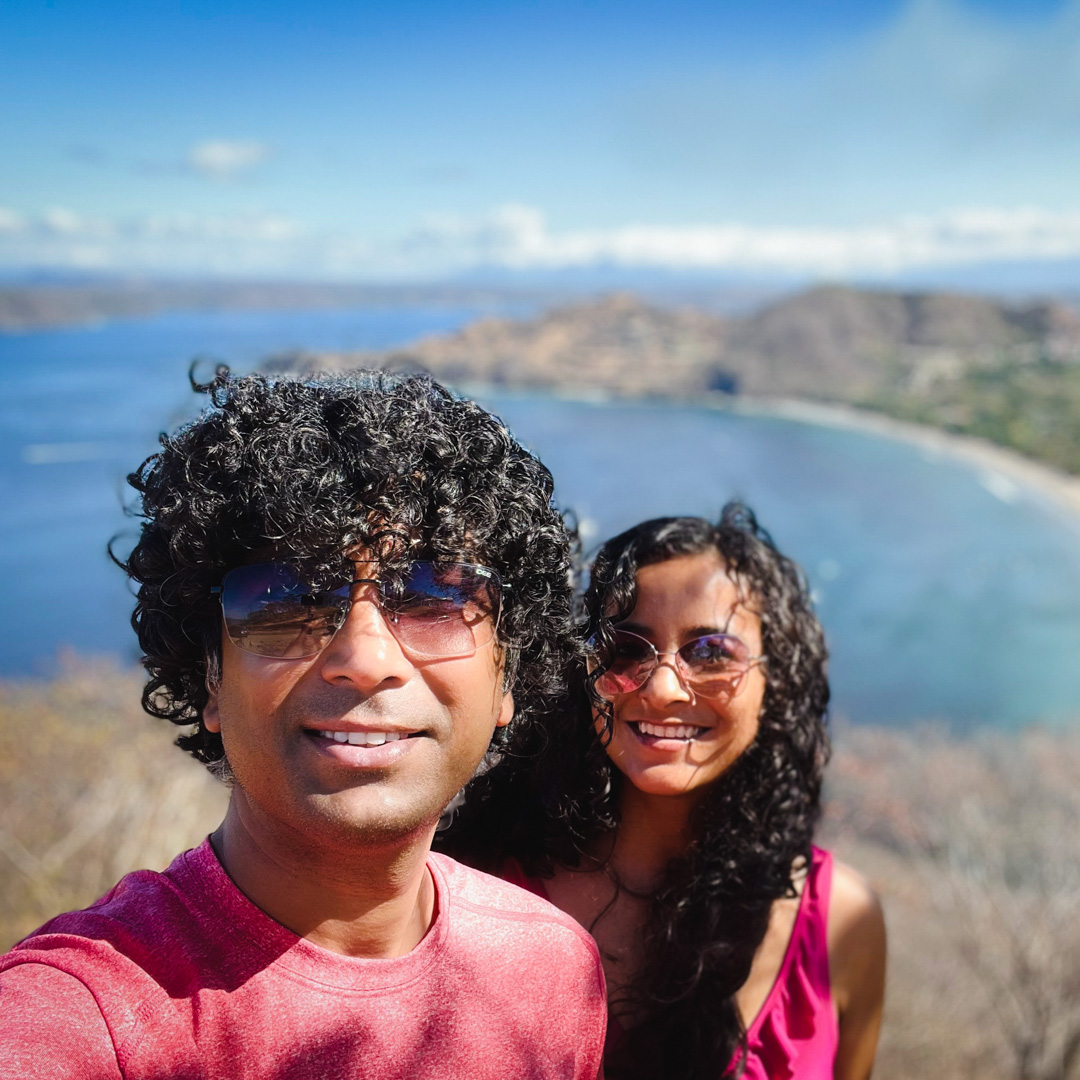
Those roads look precarious but well worth the trouble for those gorgeous views! I would love to visit the Himalaya’s!
Hi Andi, yes, the Himalayas possess an amazing character that inspires so many to travel to seemingly difficult places. 🙂
Wow! These views are amazing! Gorgeous pictures. Looks like you had a wonderful trip!
Hi Kristi, yes, we had an awesome trip, completely enjoying the stunning scenery all around. 🙂
Wow! Getting there isn’t the easiest of things but the beauty of the place makes it all worthwhile. Your photos are so beautiful that I feel like I have been transported there. It’s making me want to go there. Thanks for sharing this stunning side.
Thank you so much for your kind words Mayi! 🙂
What photos! The stars in particular are just stunning! Definitely makes me want to visit this region – and India in general! THank you!
Thanks Cate! 🙂
Thanks for sharing your photo journey on your Kinnaur and Spiti road trip. Your pictures are magnificent especially the image with the mountains covered in green vegetation. What route options would you recommend if a person only has 1 or 2 days?
Hi Lydia, thanks for your appreciation of the photos. You would need about 2 weeks to make a road trip through Kinnaur and Spiti. However, if you have just 1-2 days to get a taste of the Himalayas, you can consider going on day trips to the nearby less crowded villages if your base is Simla or Manali.